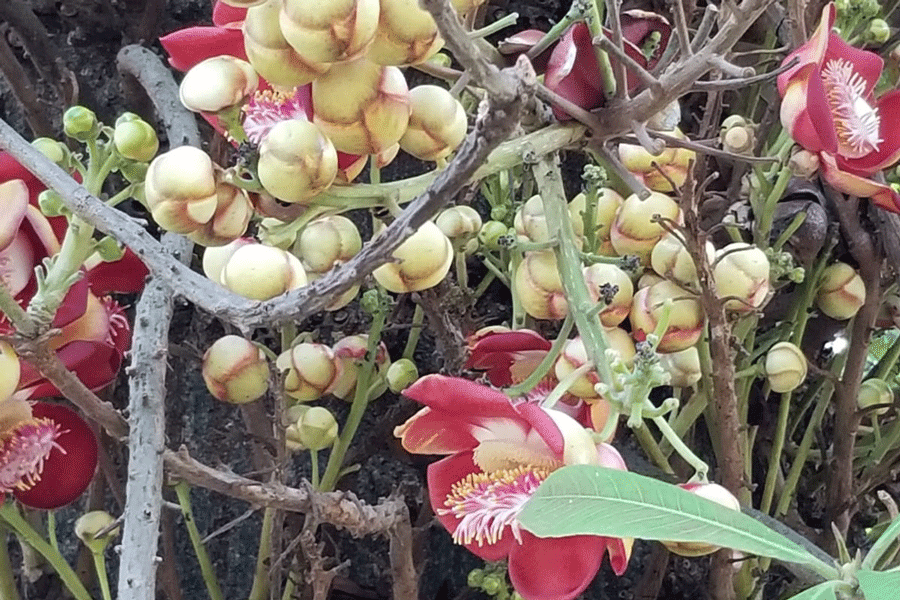Nagalingam Tree is a medium-sized tree (approximately 25/26m tall and 0.9m across) produce exotic fragrant flowers and fruits resembling cannon balls. That is why it is also called ‘Cannon Ball tree’. The trees are grown extensively in Shiva temples in India. Hindus worship Nagalingam as a sacred tree because the petals of the flower resemble the hood of the Naga, a holy snake, protecting a Shiva Lingam. In Hindi it is called Shiv Kamal and also known as Kailaspati. It is known as Nagakeshar or Nagalingam in Bengali. Its scientific name Couroupita guianensis. Nagalingam is a deciduous tree.
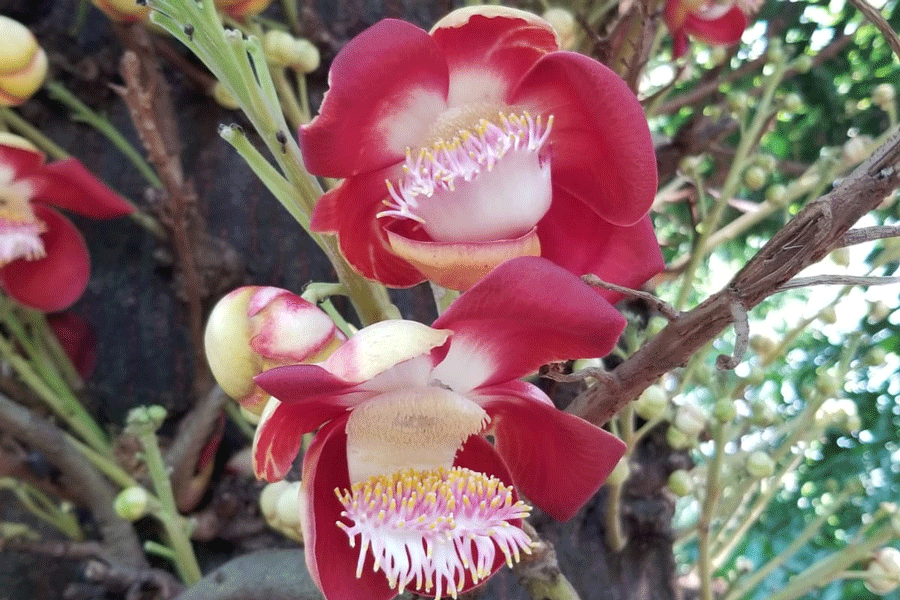
Flowers of the Nagalingam tree in full bloom The Telegraph
It is native to southern Caribbean and to the tropical northern South America, especially in Amazon Basin, Guyana and Suriname. In India it has been growing for the past two or three thousand years at least, as attested by textual records, hence it is possible that tree’s presence in both ancient India and South America as proof that the we had connections with the other parts of the world long before the European voyagers. It's rare, but also found in Bangladesh.
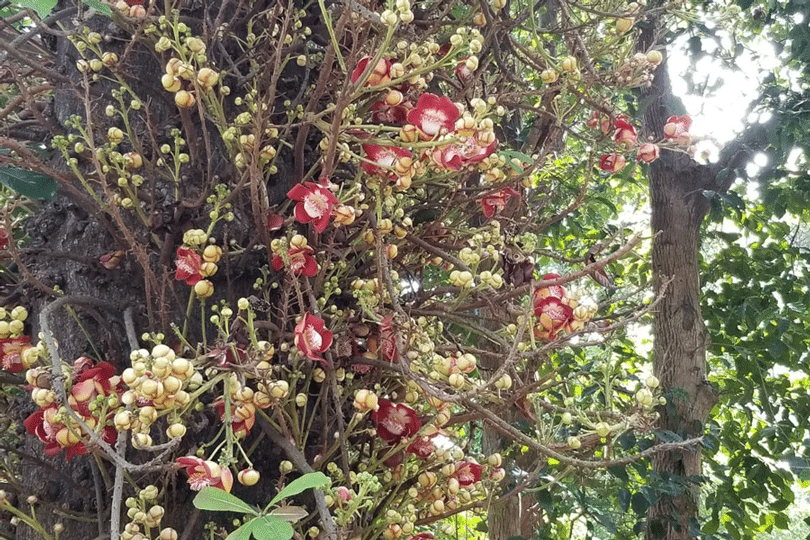
The cannonball tree. The Telegraph
The majority of these trees outside their natural environment have been planted as a botanical wonder, as they grow very large, distinctive flowers. Its flowers are orange, scarlet and pink in colour, and form large bunches measuring up to 2.5m / 3m in length. They produce large spherical and woody fruits ranging from 14 to 25 cm in diameter, containing up to 200 or 300 seeds a piece.
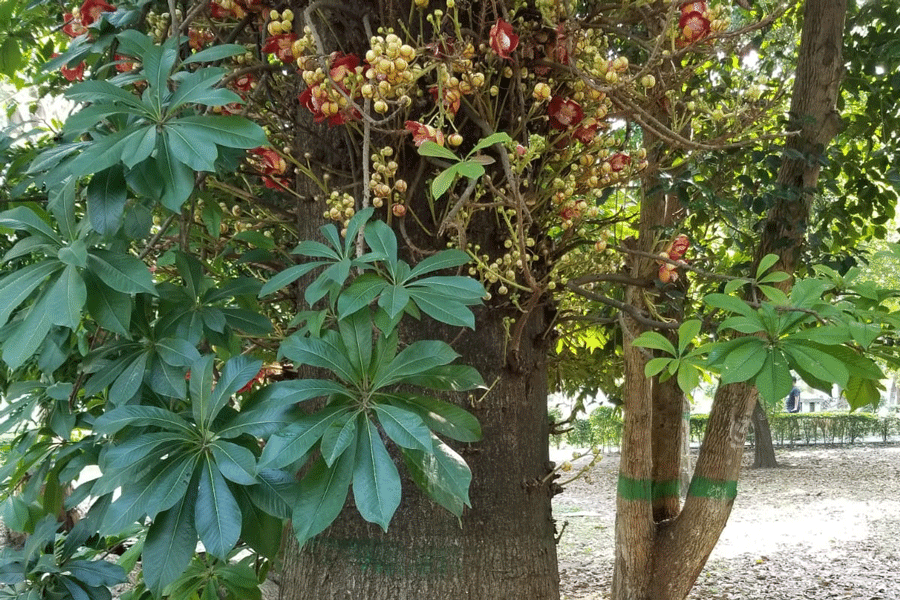
The cannonball tree. The Telegraph
Both the fruit and the flower grow from stalks which sprout from the trunk of the tree. these are found just below the foliage branches, and right down to just above ground level. The sprouting, however, can range from 2 to 5/6 feet in length. An interesting feature of this tree are the flowers with strong and sweet scented smell. The fruit emits an unpleasant odour Another peculiar thing about the flower is that they have no nectar within them.
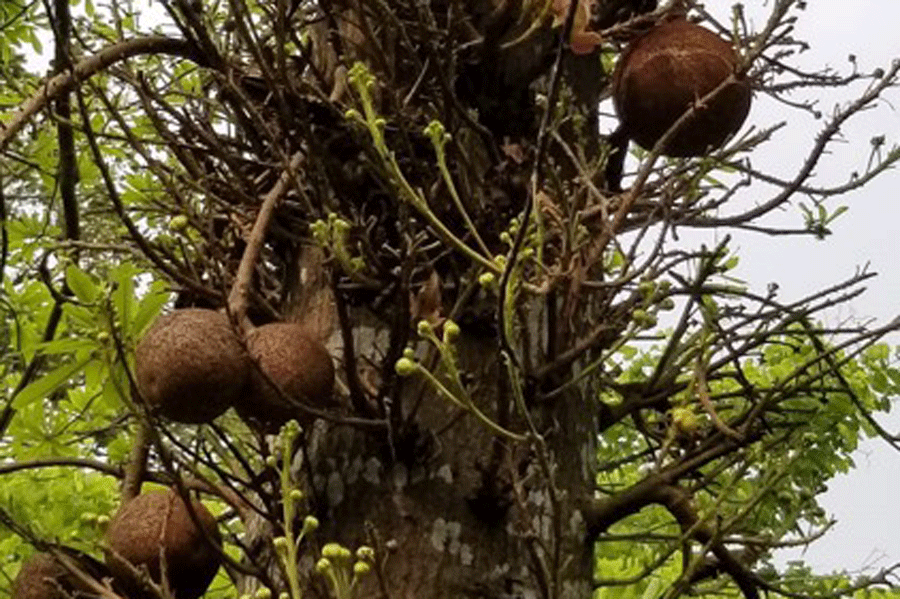
The heavy rounded seeds, which have given the tree the name cannonball. The Telegraph
Tips for care
A cannonball tree requires a warm, humid environment and prefers full sun to partial shade. More than six hours of sunlight a day is ideal for the plant. Temperature needed ranges from 25 to 35°C. It grows best in well-draining soil with a pH of 6.0 to 7.0. Plant the tree in well-drained soil that is rich in organic content. Water the plant thoroughly in the summer and reduce watering in winter and rainy season. Fertilise sparingly 10 inches away from the base. Fertilise once a month from October to January.
The Nagalingam tree possesses antibiotic, antifungal, antiseptic and analgesic qualities. The trees are used to cure colds and stomach aches. Juice made from the leaves is used to cure skin diseases, and South American Healers have even used tree parts for treating malaria. The fruit can disinfect wounds. The fruit emits an unpleasant odor and can be used as an insect repellent just by rubbing it to the skin or clothes.
